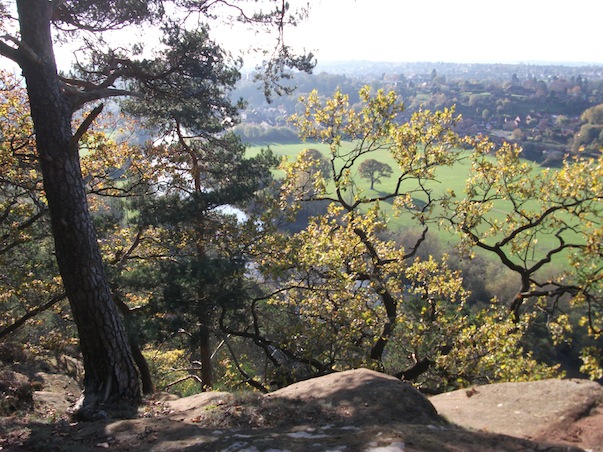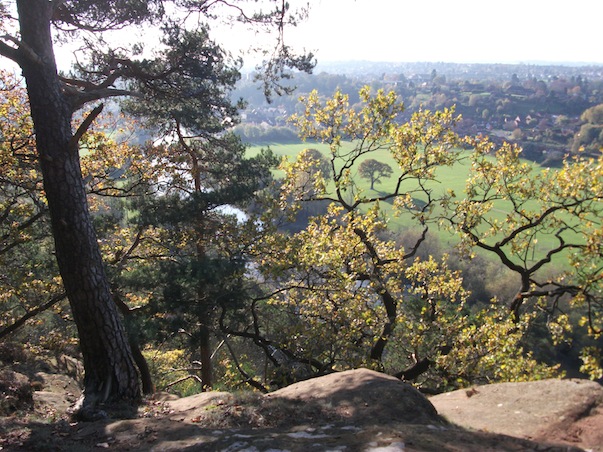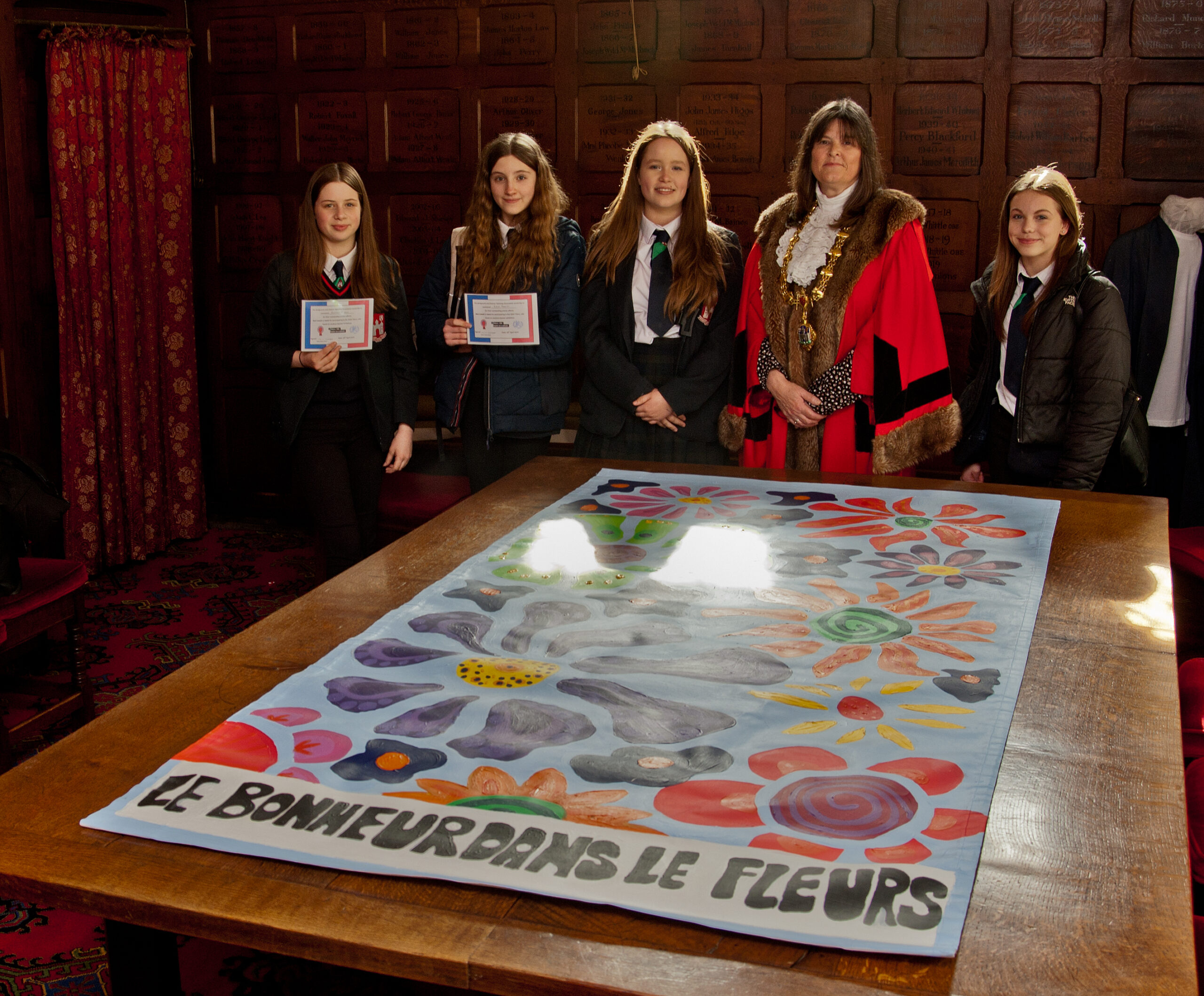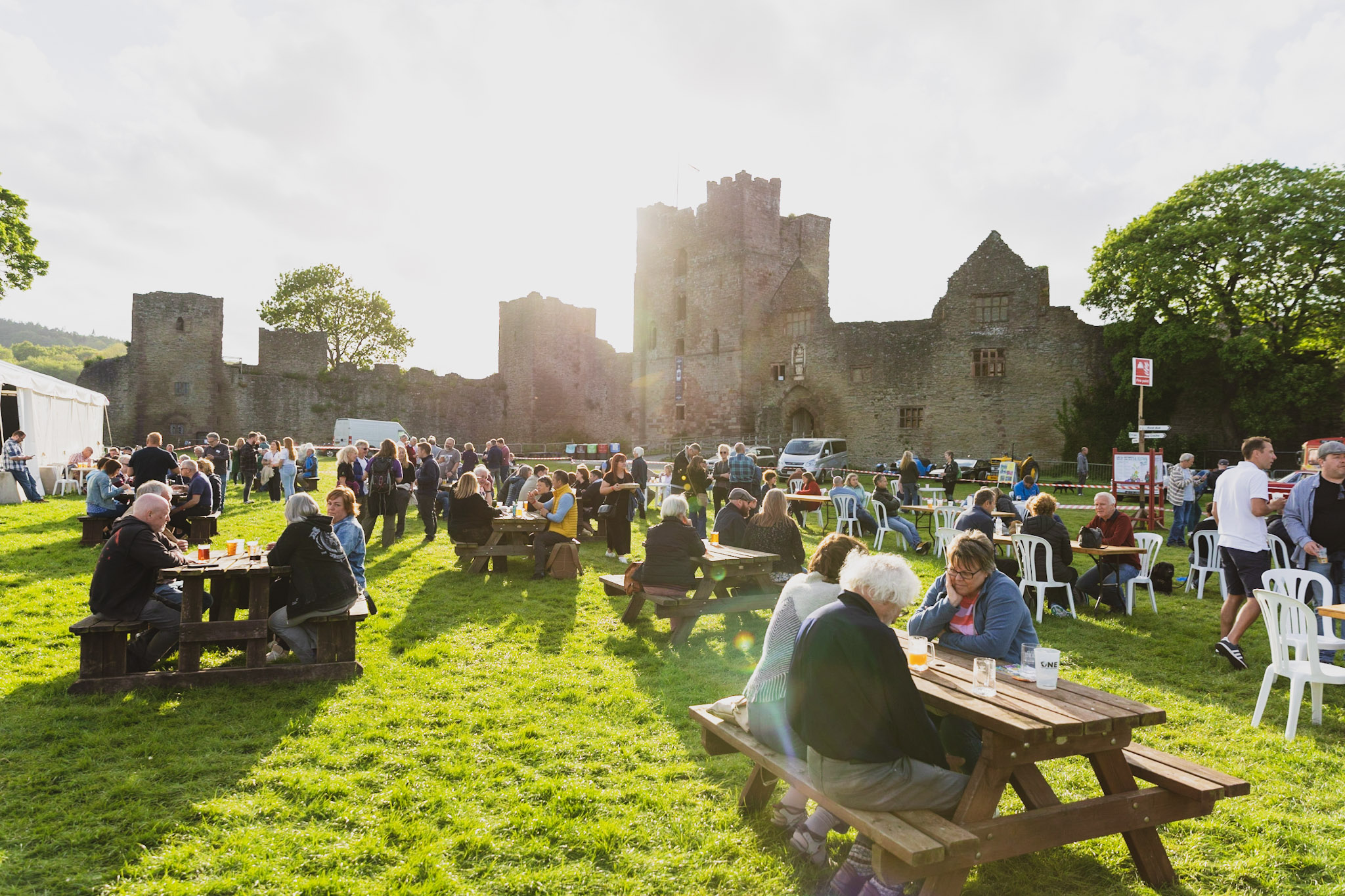It is said that it was Ethelfleda, daughter of King Alfred the Great, who first realised the potential for Bridgnorth as a settlement. Standing on High Rock on a crisp winter day, I imagine the Lady of the Mercians first taking in the view over her kingdom. She would have seen the sandstone cliffs and terraces, the river glistening in the valley below and Brown Clee and the wooded slopes of Shirlett High Park on the horizon. Today the town has grown. Housing estates, church spires, playing fields and the golf course are all relatively recent additions. The sandstone upon which I am standing however, is timeless. Names carved into the rock are testament to decades of people walking up to this lofty outpost.
Growing amongst the sandstone are trees. The main species are scots pine and oak with a few beech trees. Normally the roots of trees are hidden in a subterranean world. Occasionally it is possible to find an old trackway or stream that has exposed a cross section of a root system, providing a fascinating insight. Fine root fibres soak up water and nutrients whilst coarse roots anchor the tree. The roots tend to spread outwards rather than growing very deep.
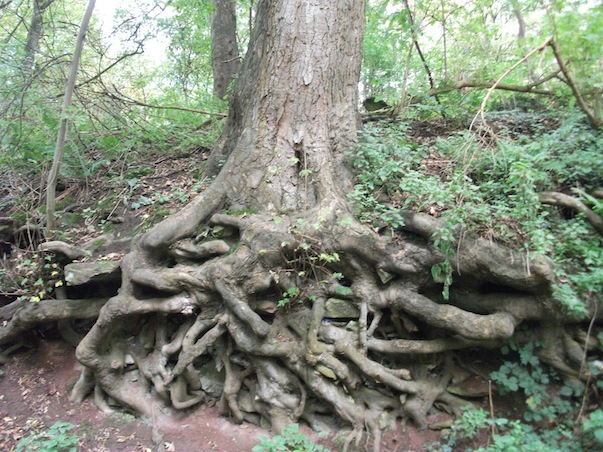 Up on High Rock the roots of the trees creep over the surface of the sandstone. Ravaged by strong winds in this wild and exposed place with nutrient poor and rocky soil, these are hardy specimens. They do not grow to a huge size and end up as stunted and gnarled warriors, perched on the edge of a cliff face. Our trees are under threat from an invisible enemy. The tragic news this autumn that Chalara fraxinea is present in ash trees in the UK could change the face of the countryside irrevocably.
Up on High Rock the roots of the trees creep over the surface of the sandstone. Ravaged by strong winds in this wild and exposed place with nutrient poor and rocky soil, these are hardy specimens. They do not grow to a huge size and end up as stunted and gnarled warriors, perched on the edge of a cliff face. Our trees are under threat from an invisible enemy. The tragic news this autumn that Chalara fraxinea is present in ash trees in the UK could change the face of the countryside irrevocably.
The last major tree dieback episode was Dutch elm disease in the 1970s. The elm population of the UK was decimated. Dead skeletons of elm trees can still be found throughout Shropshire, the bark slowly peeling and falling off like a rusty suit of armour. On the heartwood of the elm trees are the distinctive markings of the beetle that spreads the fungus. Chalara is also a fungus but the spores are carried by the wind.
Chalara has killed 90% of ash trees in Denmark. Ash trees make up a large part of many of our local woodlands. They are canopy trees that create light conditions, often with a hazel coppice understorey that is perfect for wildflowers such as dogs mercury and wild garlic. Ash seeds are eaten by birds such as bullfinches. Mature ash trees form ‘master trees’ for rare butterflies called brown hairstreaks that congregate in the canopy to mate. Ash is also one of our most valuable firewoods and a useful timber for things like tool handles. The fact that this disease been confirmed in Shropshire is extremely worrying.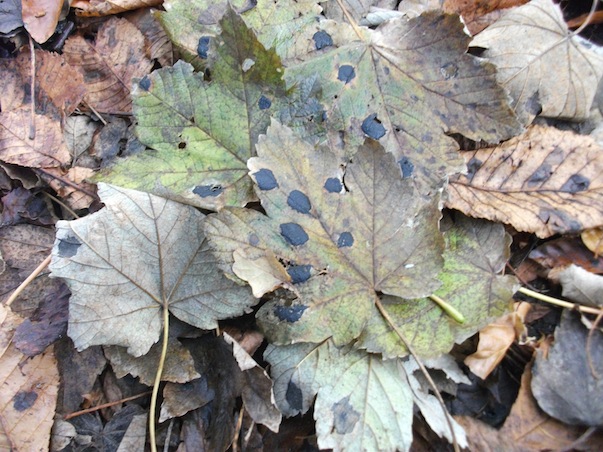
This unfortunately is not the only threat to our trees. Down in south Shropshire, the River Clun meanders through the quiet countryside. Lush green beds of weed shimmer in the flow of the shallow clear water. The streamside alders that guard the banks of the river are being infected by a pathogen called Phytopthora alni. Infected trees sometimes have black tarry patches on the trunk and produce abnormally small leaves. Branch dieback follows. One of the problems is that the roots of the alder play a vital role in holding river banks together. When the trees die, erosion of the banks can occur. The only treatment is to regularly coppice the trees to encourage them to come back stronger. The regrowth must then be fenced to prevent nibbling by livestock. Shortly after an alder tree is chopped down, the wood turns red. It has been said that the tree bleeds. Rivers like the Clun are surely running red with the loss of so many trees.
At this time of year we bring trees into our homes and decorate them to celebrate Christmas. Trees bring peace. They have a gentle energy. The potential death of so many trees is something that should concern us all. We are living in an age when there seem to be more tree diseases than ever. Some, like the tar spot fungus that one sees on sycamore leaves at this time of year, are relatively benign. They are a natural part of tree ecology. Chalara fraxinea, on the other hand, has potential to do widespread damage to a whole species. Our policy makers must start to take the issue of tree diseases more seriously.
Do one thing for wildlife this month:
It is doubtful whether Chalara can be contained now that it is present in the British countryside. We will know more in spring when the trees start coming into leaf again. There are still ways that we can help our ash trees; The Woodland Trust has set up a rescue team to engage volunteers in reporting symptoms, raising awareness, generating funds and holding those in power to account. Please sign up at: www.woodlandtrust.org.uk/rescue
– Edward Andrews MSc.

